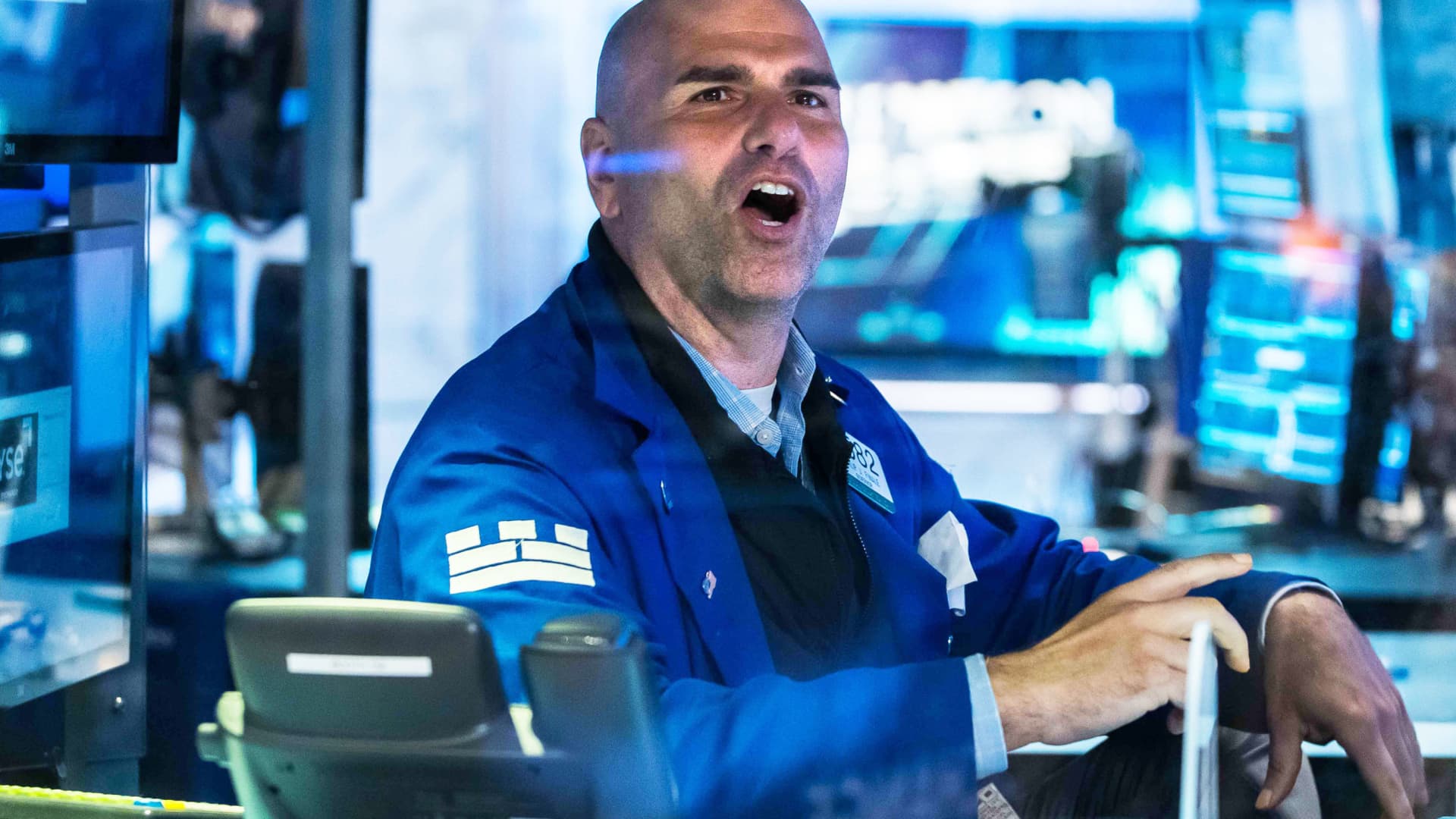Stocks could struggle as investors read the Fed’s message to mean a recession is more likely


The stock market could continue to struggle with the idea the Federal Reserve may be more willing to risk a recession as it battles inflation. Stocks seesawed but closed sharply lower Wednesday after the Fed said it was raising interest rates by 75 basis points, as expected, and issued a new range of forecasts. A basis point equals 0.01 of a percentage point. The Fed, in its forecasts, sounded slightly more hawkish than expected on interest rates. The Fed’s median forecast for the peak in the fed funds rate was 4.6% in 2023, up sharply from the 3.8% it previously forecast and the 4.51% that was being priced into the futures market. That is the point, the so-called “terminal rate,” where the Fed expects to stop raising rates. “The extent of the aggressiveness that the Fed is signaling did indeed surprise us,” said Mark Cabana, head of U.S. short rates at Bank of America. “This is very consistent with the recent shift in commentary from the Fed, and it certainly sounds like a Fed that is absolutely okay risking recession, bringing inflation lower with restrictive monetary policy.” Cabana said the Fed’s new forecast for a fed funds rate at 4.4% by the end of this year means the central bank is probably going to front-load rate hikes. It could raise rates by 75 basis points for a fourth time in November and by a half point in December, he said. Right moves The market views the Fed as making the right moves since market expectations for inflation are dropping, Cabana said. Fed funds futures are no longer pricing in a rate cut for next year. “It’s really hawkish,” said John Briggs of NatWest Markets. He said the median rates in the Fed’s interest rate forecast were higher than expected. The Fed is “saying it’s front-loaded but they are staying restrictive all the way through 2025,” he said. In 2025, the fed funds rate median target is 2.9%. “They’re basically saying rates have to go higher and faster and even if we have cuts in 2024 and 2025, they’re still going to stay restrictive into 2025. You don’t have them getting back to neutral until 2025. It’s pretty hawkish. It’s three years of tight policy,” he said. Bond yields at the short end of the Treasury curve, like the 2-year , climbed Wednesday on the prospect of higher interest rates, but the yields on the 10-year note and 30-year bond finished in the opposite direction. The moves extended an already inverted yield curve where the short end is yielding more than longer-duration bonds. That is called an inversion, and it signals recession. “I think the main takeaway that I’m seeing is really reflected in the market. You have a deeper inversion,” said Keith Lerner, chief investment officer at Truist. “The response we’re seeing is when you peel back the onion, the market is showing you there’s greater concerns about a slowdown in the economy and recession risks, which we agree with … The recession risk is higher into next year.” The fed funds rate range, after the latest hike, is 3% to 3.25%, up from zero to 0.25% before hikes began last March. Already slowing “The challenge for the market, the reality is all these rate hikes, including the one today, work with a lag, and that’s got to weigh on the economy regardless of whether [the Fed] pivots in the future,” said Lerner. He said the economy is already slowing, so investors should move up in quality and stay defensive. The risk of recession could mean that downward earnings revisions could be even worse, strategists say. Lerner said investors should also realize that higher rates in the bond market could pressure stocks as investors look for attractive yield elsewhere. “There is an alternative to equities now,” he said. “You’re getting paid in the fixed income market, and the fixed income market is getting more attractive.” Sam Stovall, chief investment strategist at CFRA, said the more hawkish Fed does not mean the market will keep from rallying in the fourth quarter. The fourth quarter in a midterm election year is often positive, after stocks crater in September and early October in the typical seasonal pattern. “It raises the question that maybe the worst is not behind us,” said Stovall. He said the fact that the S & P 500 did not hold the key 3,803 level Wednesday means it could now test the June low. On an intraday basis, the S & P 500 fell to 3,636 in June. Stovall said the market, however, may take some solace in the Fed’s roadmap on rates. “If the Fed sticks to that kind of policy and then gives us the impression that it might be done after that,” he said, “I think the market breathes a sigh of relief and starts to feel better.” Stovall said he is less enthusiastic about a fourth-quarter rally, but it could still happen. “I’m not giving up on a fourth-quarter rally, but it might start with a lowercase ‘r,'” he said. This post has been syndicated from a third-party source. View the original article here.




